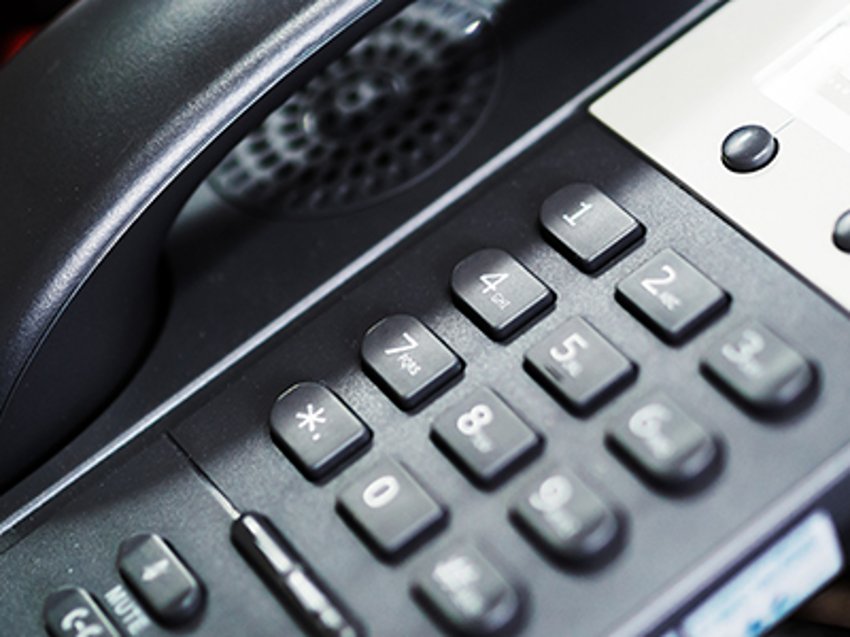A Brief History of Your Office Telephone—and Your Smartphone
In 1876, Alexander Graham Bell spoke the first intelligible words over the first office telephone to his assistant, who was in the next room: "Mr. Watson, come here. I want you." Bell might not recognize today's office telephone as his invention.

To say telephones have come a long way since then is more than an understatement.
Today, Thomas A. Watson would likely reply, "I'll be right there. Just waiting on my mocha frappuccino at Starbucks. If you want something, text me your order."
Bell would not recognize the smart, wireless devices we now call phones, nor would most people recognize his "electrical speech machine" as a telephone. Heck, to teenagers, any phone with a cord looks like an antique or foreign object.
Phones have become such an integral part of daily life that now is a good time to take a break from texting, tweeting, emailing, and playing "Angry Birds" to recognize Bell's invention and to celebrate all the inventors who helped it become smarter and smarter over the next 140 years.
How It All Started
The idea of 20-something geniuses creating disruptive technology isn't a recent, Silicon Valley-specific phenomenon. According to the History Channel, Bell was only 29 years old when he revolutionized human communication.
Bell patented his electrical speech machine on March 7, 1876, but his love of communication started much earlier. His mother was deaf and his father was an expert in speech development. Inspired by them both, Bell became a noted speech professor and established a school for the deaf in Boston.
While teaching in Boston, Bell became fascinated with the idea of transmitting speech over telegraph wires, first as a way to help deaf people learn to speak and later as a way for people to communicate across distances. The invention of the telegraph in 1843 had already made instant long-distance communication possible, but sending and receiving telegraphs required specialized equipment and hand deliveries to the recipients. Bell envisioned a "harmonic telegraph," a device that would allow individuals to speak to one another from different locations and from their own homes.
With help from machinist Watson, Bell developed his first prototype. It converted sound waves into an electric current that varied in intensity and frequency, causing a thin iron plate—the diaphragm—to vibrate. These vibrations were transferred magnetically along connected wires to another device's diaphragm, where they replicated the original sound. Three days after he filed for the patent, he placed his first famous call.
Bell wasn't the only inventor to think of using telegraph wires for voice communication. Around the same time, other inventors—most notably a man named Elisha Gray—created and attempted to patent similar devices, but in a case that went all the way to the U.S. Supreme Court, Bell got the patent, the right to start the first telephone company, and the place in history books as the inventor of the telephone.
Evolution of the Telephone: A Timeline
Bell might be the father of the telephone, but plenty of other inventors, scientists, and engineers deserve credit for the devices we now carry in our pockets—the smartphones and softphones that are more computers than telephones.
Here's how telephones evolved since Bell's first day of candlestick and rotary phones:
- 1963: The Bell Telephone Company introduced the first push-button, touch-tone phone.
- 1965: Jazz musician Teri Pall invented a version of the cordless phone with a two-mile range.
- 1973: Marty Cooper, then a Motorola employee, made the first mobile phone call.
- 1989: Israeli businessman and entrepreneur Alon Cohen pioneered Voice over Internet Protocol (VoIP).
- 1992: Neil Papworth, then a Vodafone employee, sent the first text message—"Merry Christmas"—from his PC to a cell phone.
- 1994: IBM launched the first smartphone, Simon, which never really took off, probably due to its $899 price tag.
- 2000: Ericsson launched the R380, the first device marketed as a "smartphone."
- 2002: The first phones with built-in cameras became publicly available.
- 2007: Apple launched the iPhone.
- 2008: HTC Dream (or Google G1) became the first Android smartphone.
Smartphones have certainly evolved further since 2008, but over the past decade, it's become harder and harder to separate the history of the telephone from the history of computers, mobile devices, the internet, and (more recently) the cloud.
No, Alexander Graham Bell wouldn't recognize his invention in your smartphone, but wouldn't it be fun to watch him learn how to use it?
Is your office telephone system closer to a Bell original than a modern piece of communications technology? Speak to a Vonage Business consultant about getting your business up to speed.